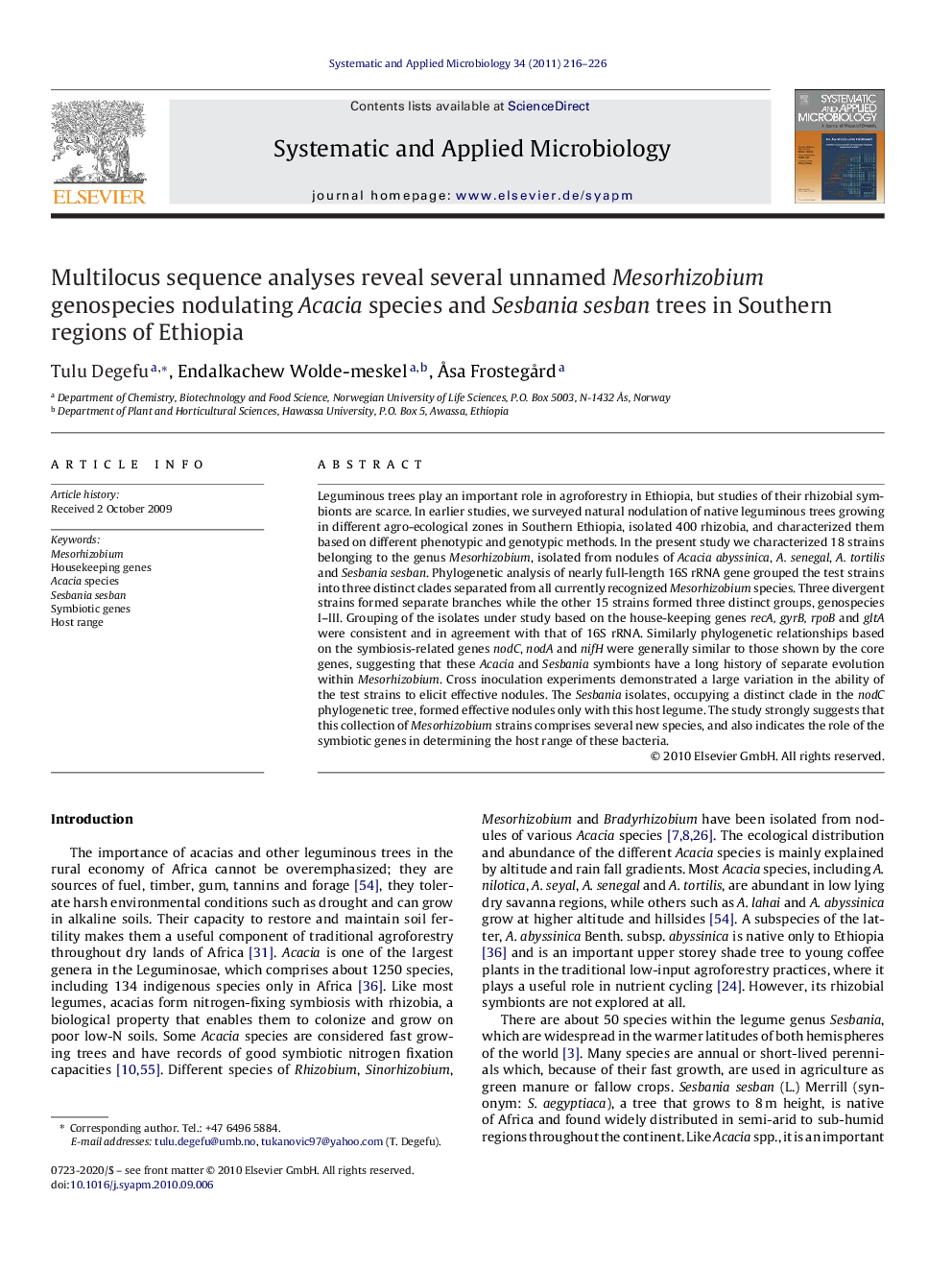| Article ID | Journal | Published Year | Pages | File Type |
|---|---|---|---|---|
| 2063357 | Systematic and Applied Microbiology | 2011 | 11 Pages |
Leguminous trees play an important role in agroforestry in Ethiopia, but studies of their rhizobial symbionts are scarce. In earlier studies, we surveyed natural nodulation of native leguminous trees growing in different agro-ecological zones in Southern Ethiopia, isolated 400 rhizobia, and characterized them based on different phenotypic and genotypic methods. In the present study we characterized 18 strains belonging to the genus Mesorhizobium, isolated from nodules of Acacia abyssinica, A. senegal, A. tortilis and Sesbania sesban. Phylogenetic analysis of nearly full-length 16S rRNA gene grouped the test strains into three distinct clades separated from all currently recognized Mesorhizobium species. Three divergent strains formed separate branches while the other 15 strains formed three distinct groups, genospecies I–III. Grouping of the isolates under study based on the house-keeping genes recA, gyrB, rpoB and gltA were consistent and in agreement with that of 16S rRNA. Similarly phylogenetic relationships based on the symbiosis-related genes nodC, nodA and nifH were generally similar to those shown by the core genes, suggesting that these Acacia and Sesbania symbionts have a long history of separate evolution within Mesorhizobium. Cross inoculation experiments demonstrated a large variation in the ability of the test strains to elicit effective nodules. The Sesbania isolates, occupying a distinct clade in the nodC phylogenetic tree, formed effective nodules only with this host legume. The study strongly suggests that this collection of Mesorhizobium strains comprises several new species, and also indicates the role of the symbiotic genes in determining the host range of these bacteria.
